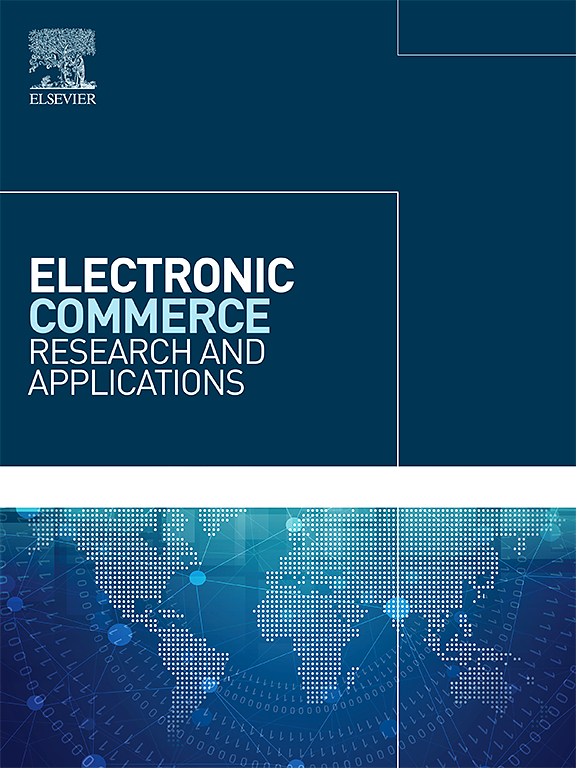可解释、稳健和公平的以用户为中心的重症肺炎诊断和预后人工智能系统
IF 6.3
3区 管理学
Q1 BUSINESS
Electronic Commerce Research and Applications
Pub Date : 2025-04-05
DOI:10.1016/j.elerap.2025.101499
引用次数: 0
摘要
2019冠状病毒病大流行显著加剧了各种重症肺炎诊断和预后的复杂性,给全球卫生保健系统带来了非同寻常的挑战。虽然以前基于人工智能的方法主要针对COVID-19重症肺炎,并试图提高机器学习的准确性,但它们往往忽略了关键方面,例如区分COVID-19传染性、非covid传染性和非传染性重症肺炎的诊断和预后特征,以及以用户为中心的人工智能辅助决策的可解释性和公平性。本研究强调了在COVID-19大流行背景下对重症肺炎进行强有力、公平和可靠的诊断和预后的必要性。本文介绍了一个以用户为中心的框架,该框架首先采用基于gaussiancopula的数据增强方法,通过解决小的不平衡样本集来增强公平性。在此之后,该框架引入了一个可解释的人工智能系统,旨在利用人口统计学和生理学指标对三种类型的重症肺炎进行分类,提供透明的决策过程和对预后风险因素的可理解分析。我们公平的系统完全采用透明模型,使医护人员能够获得智能可靠的医疗服务,如重症肺炎的预诊断和预后分析(死亡可能性)。结果表明,数据增强方法有效地减少了数据偏差,提高了公平性,分布相似度达到70.70%。我们基于透明模型的重症肺炎分类模块在真实数据集上达到98.88%的f1得分。透明机制揭示了区分重症肺炎类型的四个最重要的特征是“白细胞介素_6”、“白蛋白”、“D_Dimer”和“CD4_absolute_count”。同时,可解释的统计分析确定了每种肺炎类别的关键死亡风险因素:COVID-19重症肺炎的“血小板”和“肌酐”,非COVID-19传染性重症肺炎的“血米巴”、“白细胞介素-6”和“尿酸”,非传染性重症肺炎的“血米巴”、“脑钠素”、“胆固醇”和“PT”。我们的研究强调了透明机器学习算法用于准确诊断和Cox比例回归用于透明风险趋势预测的潜力。这些分析工具和医疗结果有助于医生对肺炎患者进行早期和适当的管理,有可能彻底改变诊断过程和患者护理策略,以改善临床结果。本文章由计算机程序翻译,如有差异,请以英文原文为准。
Explainable, robust and fair user-centric AI system for the diagnosis and prognosis of severe pneumonia
The COVID-19 pandemic has markedly exacerbated the complexities surrounding the diagnosis and prognosis of diverse severe pneumonia types, posing extraordinary challenges to healthcare systems worldwide. While previous AI-based approaches primarily targeted COVID-19 severe pneumonia and sought to enhance machine learning accuracy, they often neglected critical aspects such as distinguishing diagnostic and prognostic features among COVID-19 infectious, non-COVID infectious, and non-infectious severe pneumonia, as well as the explainability and fairness of user-centric AI assist decisions. This study es the need for robust, fair, and reliable diagnosis and prognosis of severe pneumonia within the context of the COVID-19 pandemic. This paper introduces a user-centric framework that first employs a GaussianCopula-based data augmentation method to enhance fairness by addressing small imbalanced sample sets. Following this, the framework introduces an explainable AI system designed to classify three types of severe pneumonia using demographic and physiological indicators, offering transparent decision-making processes and an understandable analysis of prognosis risk factors. Our fair system utilizes transparent models exclusively, which enables healthcare practitioners to access intelligent and reliable medical services such as pre-diagnosis and prognosis analysis (the likelihood of death) of severe pneumonia. The results show the data augmentation method efficiently reduces data bias and enhances fairness, reaching 70.70% distribution similarity. Our transparent model-based severe pneumonia classification module achieves 98.88% F1-scores on a real-world dataset. The transparent mechanism reveals that the four most significant features for classifying severe pneumonia types are ‘Interleukin_6’, ‘Albumin’, ‘D_Dimer’, and ‘CD4_absolute_count’. Meanwhile, the explainable statistical analysis identifies critical mortality risk factors for each pneumonia category: ‘Blood platelet’ and ‘Creatinine’ for COVID-19 severe pneumonia, ‘Hemameba’, ‘Interleukin-6’, and ‘Uric Acid’ for non-COVID-19 infectious severe pneumonia, and ‘Hemameba’, ‘BNP’, ‘Cholesterol’, and ‘PT’ for non-infectious severe pneumonia. Our study highlights the potential of transparent machine learning algorithms for accurate diagnosis and Cox proportional regression for transparent risk trend prediction. These analytical tools and medical results can facilitate early and appropriate management of pneumonia patients for doctors, potentially revolutionizing diagnostic processes and patient care strategies to improve clinical outcomes.
求助全文
通过发布文献求助,成功后即可免费获取论文全文。
去求助
来源期刊

Electronic Commerce Research and Applications
工程技术-计算机:跨学科应用
CiteScore
10.10
自引率
8.30%
发文量
97
审稿时长
63 days
期刊介绍:
Electronic Commerce Research and Applications aims to create and disseminate enduring knowledge for the fast-changing e-commerce environment. A major dilemma in e-commerce research is how to achieve a balance between the currency and the life span of knowledge.
Electronic Commerce Research and Applications will contribute to the establishment of a research community to create the knowledge, technology, theory, and applications for the development of electronic commerce. This is targeted at the intersection of technological potential and business aims.
 求助内容:
求助内容: 应助结果提醒方式:
应助结果提醒方式:


